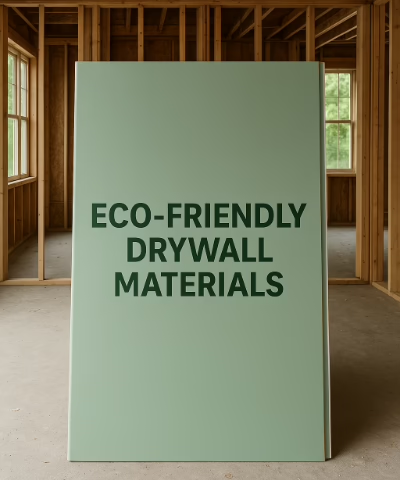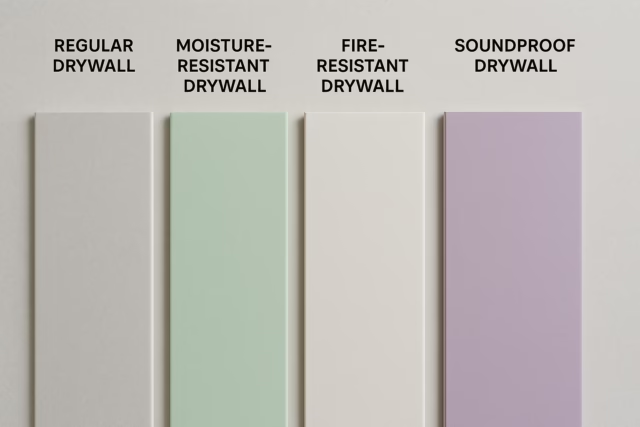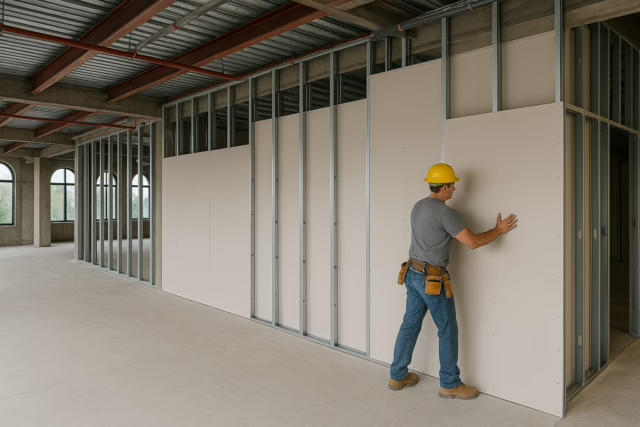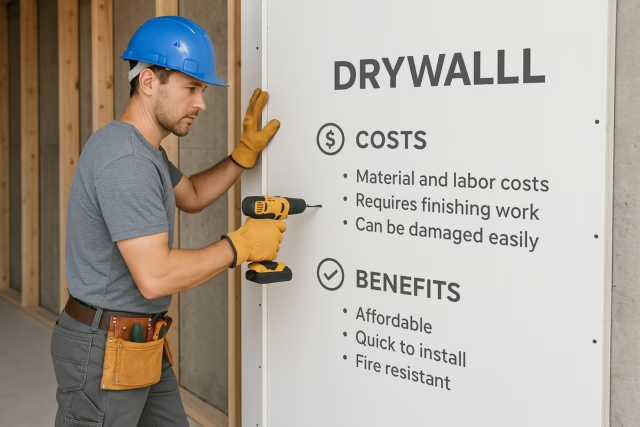As sustainable building practices continue to shape the future of the construction industry, materials like drywall are under increasing scrutiny. Although widely used for its affordability and versatility, the environmental impact of drywall can be significant if not properly managed.
In this article, we’ll examine how drywall affects the environment—from raw material extraction to disposal—and what green construction professionals can do to minimize its footprint through smarter choices.
What Is the Environmental Impact of Drywall?
Drywall, also known as gypsum board, is made primarily from gypsum, a non-toxic mineral. While the material itself is abundant and recyclable, its production, transportation, and disposal can create substantial environmental challenges.
Key Environmental Concerns:
- High energy consumption in manufacturing
- CO₂ emissions during gypsum calcination
- Landfill waste from discarded panels
- Limited reuse options for damaged drywall
- Potential for mold growth, creating indoor air quality issues
Want to learn how we approach sustainability? Visit our About Us page.
How Does Drywall Affect Green Construction Goals?
In green construction, every material should contribute to energy efficiency, indoor health, and environmental responsibility. While drywall is not inherently “green,” innovative practices are helping reduce its ecological footprint.
Negative Impacts:
- Short lifecycle in poorly maintained projects
- Use of non-recyclable additives or finishes
- Challenges with moisture resistance leading to mold and waste
Positive Opportunities:
- Recyclable gypsum cores
- Integration into LEED-certified building frameworks
- Availability of low-VOC, eco-friendly drywall options
📌 Want to include sustainable drywall in your next project? Contact us here.
Innovations Reducing Drywall’s Environmental Impact
The drywall industry is rapidly innovating to align with green building standards. Today’s manufacturers are improving production and recycling methods to minimize environmental harm.
Key Improvements:
- Recycled content drywall: Some brands now use up to 90% recycled material.
- Cleaner production processes: Factories implement closed-loop water systems and reduce emissions.
- Paperless drywall: Removes organic paper facing to reduce mold risk and enhance recyclability.
- Drywall take-back programs: Some suppliers now collect and recycle used drywall.
Explore our sustainable drywall installations on our Facebook page.
Best Practices for Reducing Drywall Waste on Site
Sustainable drywall use begins on the job site. Contractors and builders can make smart decisions that drastically reduce drywall waste and its environmental impact.
Recommended On-Site Practices:
- Use precise measurements to reduce offcuts
- Opt for larger panel sizes when possible
- Reuse cutoffs in closets or utility spaces
- Choose mold-resistant drywall in humid zones to increase longevity
- Partner with recycling facilities that accept gypsum
Want expert drywall installation that supports your green goals? Learn more on our Services page.
Final Thoughts
Understanding the environmental impact of drywall is essential for contractors, architects, and property developers aiming to build responsibly. While traditional drywall has drawbacks, modern innovations and best practices are turning it into a more sustainable choice for green construction.
At HD Drywall, we’re committed to reducing environmental impact through efficient installation, responsible sourcing, and support for recycled materials. Let’s build smarter—together.
Frequently Asked Questions
1. Can drywall be recycled?
Yes. The gypsum core is recyclable, though finishes and paper facings may limit some options.
2. Is there eco-friendly drywall available?
Absolutely. Many brands now offer drywall with high recycled content and low-VOC emissions.
3. How can I reduce drywall waste on-site?
Measure accurately, plan cuts strategically, and reuse offcuts in non-visible areas when possible.
4. Does drywall qualify for LEED points?
Yes. Certain drywall products contribute to LEED credits through recycled content and low emissions.





